

As the NHS estate advances toward its ambitious Net Zero goals, the recent announcement of £100 million in GB Energy funding represents a pivotal opportunity for progress. This government-backed initiative enables NHS Trusts across England to install rooftop solar PV systems and battery storage, lowering emissions and delivering operational efficiencies across the public sector.
However, with delivery deadlines fast approaching and sustainability objectives at stake, technical manager Rob Wall asks why estates and facilities teams must consider a critical planning question; is your roofing infrastructure ready to support solar for the next 30 years?
Making The Most of the Funding
GB Energy funding is intended to deliver long-term energy and carbon reductions, not temporary gains. The systems installed under this scheme are expected to perform for decades, which means the infrastructure beneath them must be just as robust.
One of the most effective ways to maximise the return on this funding is to begin with a technical roof assessment. This allows estate teams to identify existing issues, understand remaining roof life, and make informed decisions before solar is introduced. Where upgrades are needed, aligning them with the solar programme from the outset is often more efficient than returning to the site to manage at a later date. A coordinated approach reduces access costs, minimises service disruption, and enables single-source warranties that protect both systems.
By ensuring your roof is solar-ready, you’re not just protecting the investment, you are enabling it to perform at its best over time.
The Lifecycle Mismatch
Solar PV systems are typically designed to generate renewable energy for 25–30 years. Yet many NHS flat roofs are significantly older, with many NHS roofs now approaching the end of their serviceable life, with some in need of upgrade or replacement within the next decade.
This creates a clear risk: without aligning the lifecycle of both systems, Trusts could face expensive remedial works, panel removal, or reinstallation within the next decade.
A failing or unassessed roof introduces issues like water ingress, insulation breakdown, or load-bearing failure, any of which could jeopardise the effectiveness of a new PV system. When the goal is long-term resilience and sustainability, integrated planning becomes essential.
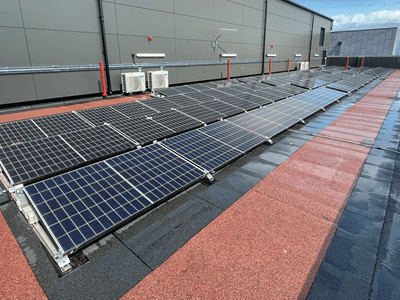
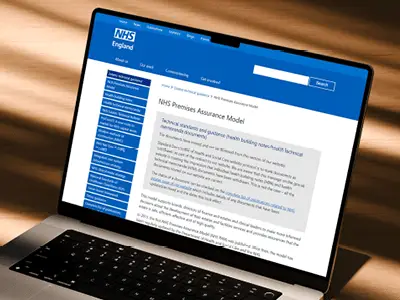
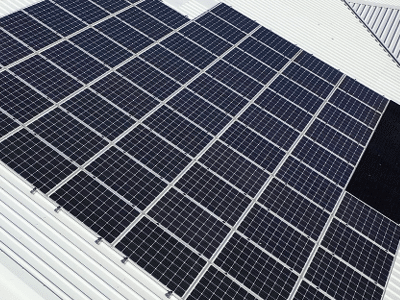
Roof Condition Survey
At Garland UK, we support NHS Trusts by starting every roofing and solar PV project with a detailed technical assessment of the existing roof area. This early-stage survey provides estates teams with clarity on build-up condition, thermal performance, waterproofing, and compliance factors, all of which are vital before PV panels are installed.
Our nationwide network of Technical Managers conducts on-site inspections and core sampling, providing full reporting and tailored recommendations. These insights support accurate specification and capital planning, helping to avoid budget overruns or unexpected project delays further down the line.
For NHS professionals balancing cost, compliance, and continuity of service, a proactive roofing strategy is key to project confidence.
Design Compatibility and HTM Compliance
Healthcare environments are among the most complex facilities to manage. Roofing systems and energy upgrades must comply with both the NHS Premises Assurance Model (PAM) and relevant Health Technical Memoranda (HTMs). But beyond compliance, design compatibility between roof and PV systems is equally important.
A truly solar-ready roof considers factors such as structural load capacity, fire performance, safe access routes, drainage, and thermal insulation, especially where roofs sit above high-dependency clinical departments or infrastructure hubs.
When roofing and solar installations are procured separately, design fragmentation or duplicated works can occur. An integrated approach helps Trusts maintain full compliance while reducing logistical complexity and delivery risk.
Solutions Built Around NHS Estates
Garland UK specialises in roofing and solar solutions that are purpose-built for healthcare settings. With over 20 years of experience working in live NHS environments, we understand the pressures estates and capital teams face, from patient safety and access logistics to phased programme delivery and stakeholder assurance.
Our service model is designed around partnership. From technical surveys and specifications to installation and aftercare, every project is supported by a dedicated Technical Manager and backed by a single-point guarantee of up to 30 years.
By combining roofing and solar under one guarantee, Trusts benefit from programme efficiency, long-term system resilience and greater peace of mind.

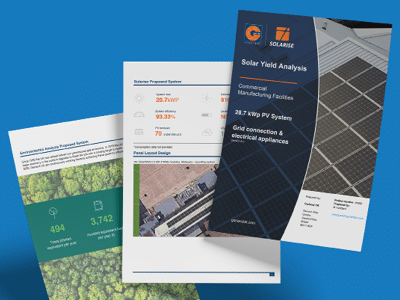
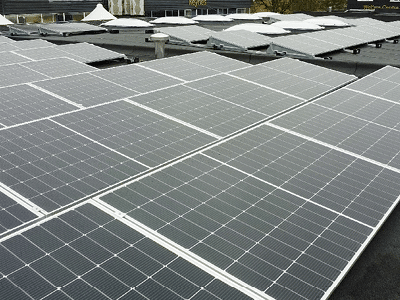
Futureproofing in Practice
In one recent hospital project, Garland UK was appointed to deliver a roofing upgrade aligned with the Trust’s Green Plan objectives. Although solar PV was not included in the initial scope, the decision was made to invest in a solar-ready specification to prepare the estate for the future. This forward-thinking approach gave the Trust the flexibility to install solar later without disturbing the newly completed roof or allocating additional capital for duplicated works.
For estates and facilities professionals navigating complex decision-making, this type of integrated planning offers long-term value and operational assurance.
Plan with confidence before you install solar PV
Preparing for solar PV starts with what’s already on your estate, and understanding the condition of your roofing is the first step to making the most of your investment. By combining roof upgrades with solar delivery, Trusts can achieve energy resilience, minimise service disruption, and ensure full system compatibility from day one.
Garland UK provides no-obligation Roof Condition Surveys and Solar Yield Analyses to NHS Trusts across England and Wales. Our Technical Managers can provide guidance, technical data, and specification support tailored to your site.
“By combining roof upgrades with solar delivery, Trusts can achieve energy resilience, minimise service disruption, and ensure full system compatibility from day one.”
Rob Wall, Technical Manager, Garland UK
